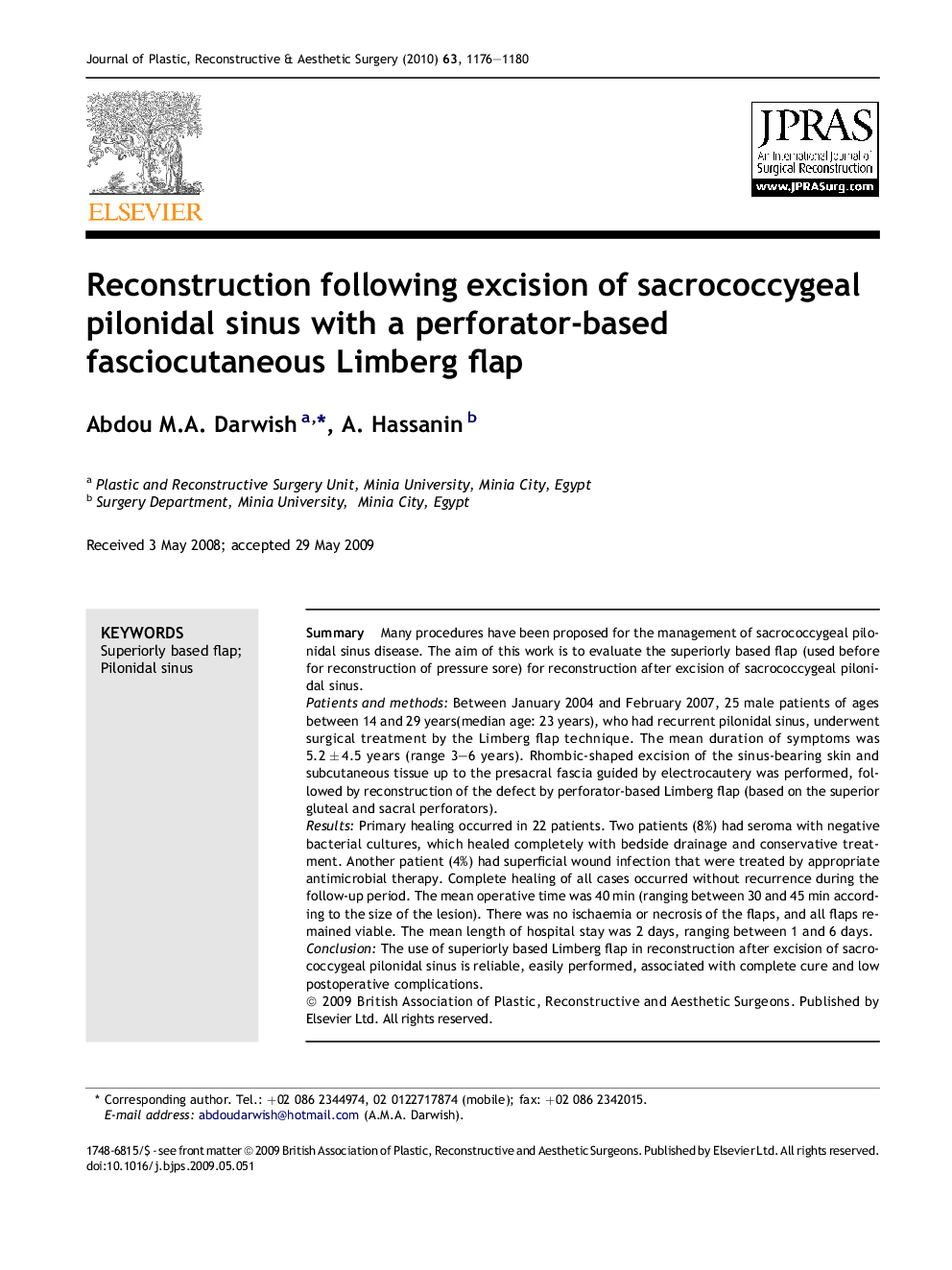| Article ID | Journal | Published Year | Pages | File Type |
|---|---|---|---|---|
| 4119819 | Journal of Plastic, Reconstructive & Aesthetic Surgery | 2010 | 5 Pages |
SummaryMany procedures have been proposed for the management of sacrococcygeal pilonidal sinus disease. The aim of this work is to evaluate the superiorly based flap (used before for reconstruction of pressure sore) for reconstruction after excision of sacrococcygeal pilonidal sinus.Patients and methodsBetween January 2004 and February 2007, 25 male patients of ages between 14 and 29 years(median age: 23 years), who had recurrent pilonidal sinus, underwent surgical treatment by the Limberg flap technique. The mean duration of symptoms was 5.2 ± 4.5 years (range 3–6 years). Rhombic-shaped excision of the sinus-bearing skin and subcutaneous tissue up to the presacral fascia guided by electrocautery was performed, followed by reconstruction of the defect by perforator-based Limberg flap (based on the superior gluteal and sacral perforators).ResultsPrimary healing occurred in 22 patients. Two patients (8%) had seroma with negative bacterial cultures, which healed completely with bedside drainage and conservative treatment. Another patient (4%) had superficial wound infection that were treated by appropriate antimicrobial therapy. Complete healing of all cases occurred without recurrence during the follow-up period. The mean operative time was 40 min (ranging between 30 and 45 min according to the size of the lesion). There was no ischaemia or necrosis of the flaps, and all flaps remained viable. The mean length of hospital stay was 2 days, ranging between 1 and 6 days.ConclusionThe use of superiorly based Limberg flap in reconstruction after excision of sacrococcygeal pilonidal sinus is reliable, easily performed, associated with complete cure and low postoperative complications.
